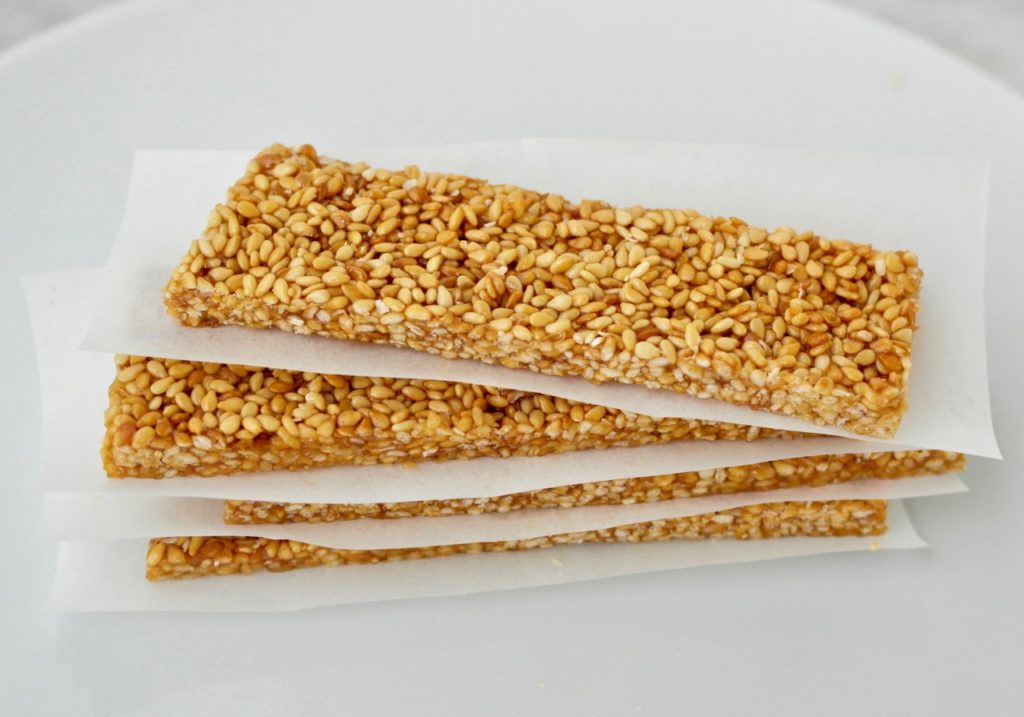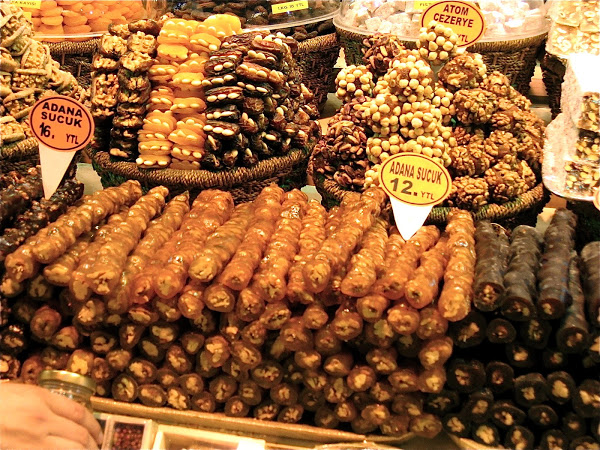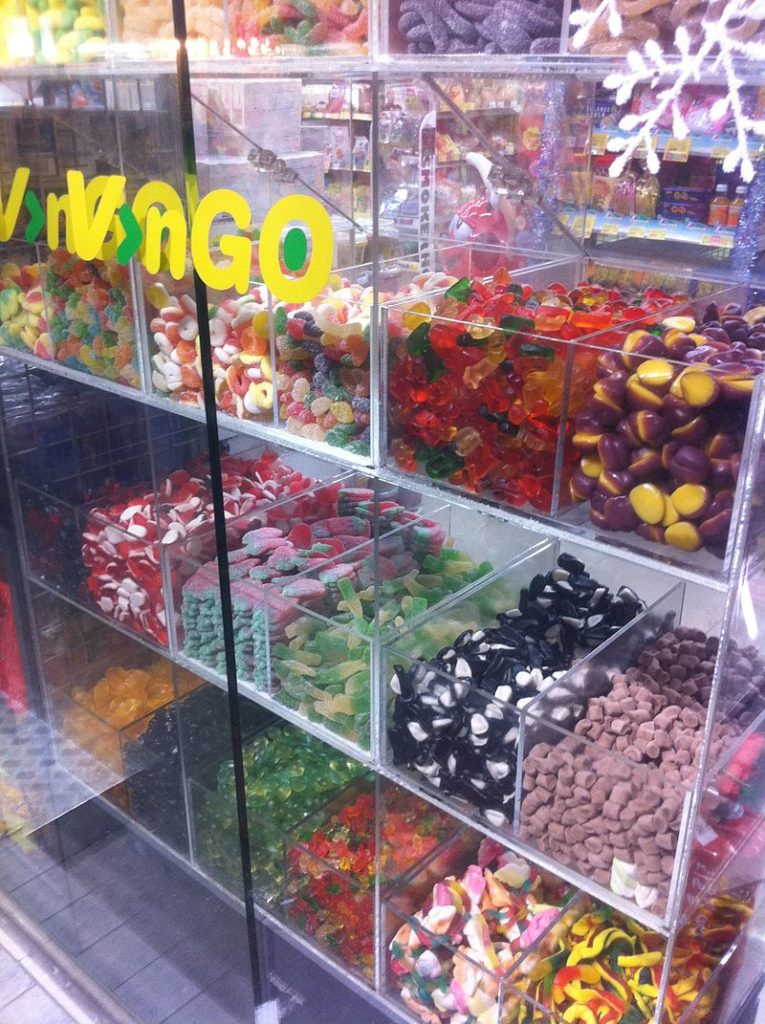According to Etymonline, “candy” has Arabic, Persian and Indian roots:
late 13c., “crystallized sugar,” from Old French çucre candi “sugar candy,” ultimately from Arabic qandi, from Persian qand “cane sugar,” probably from Sanskrit khanda “piece (of sugar),” perhaps from Dravidian (compare Tamil kantu “candy,” kattu “to harden, condense”).
The sense gradually broadened (especially in U.S.) to mean by late 19c. “any confection having sugar as its basis.” In Britain these are sweets, and candy tends to be restricted to sweets made only from boiled sugar and striped in bright colors. A candy-pull (1865) was a gathering of young people for making (by pulling into the right consistency) and eating molasses candy.
The Wikipedia article on Candy digs deeper into the history:
It began with sugar cane.
Between the 6th and 4th centuries BCE, the Persians, followed by the Greeks, discovered the people in India and their “reeds that produce honey without bees”. They adopted and then spread sugar and sugarcane agriculture. Sugarcane is indigenous to tropical South and Southeast Asia, while the word sugar is derived from the Sanskrit word Sharkara. Pieces of sugar were produced by boiling sugarcane juice in ancient India and consumed as Khanda, dubbed as the original candy and the etymology of the word.

Image: Plantation Solutions
Before sugar was readily available, candy was based on honey.

Image: olivetomato.com
Honey was used in Ancient China, Middle East, Egypt, Greece and the Roman Empire to coat fruits and flowers to preserve them or to create forms of candy. Candy is still served in this form today, though now it is more typically seen as a type of garnish. Pictured above is a modern take on a traditional greek honey-and-sesame candybar. Pictured below, Istanbul “sausage sweets”, made from nuts and dates dipped in grape or mulberry juice.

Image: sandyleonardsnaps
After the Industrial Revolution came penny candies, also known as bulk confectioneries, pick ‘n mix, and so on. These made candies affordable for children.

Image: Wikipedia
Some interesting candy facts:
- Candy has a long shelf life, because the high concentration of sugar makes it difficult for bacteria to grow [source]
- The global candy market is estimated to be worth been approximately US $80 billion in 2018 [source]
- Reese’s Peanut Butter Cups are the No. 1 selling candy brand in the United States [source]
- Cotton candy was invented by a dentist, William Morrison [source]
- A 1959 Swedish dental health campaign encouraged people to reduce the risk of dental problems by limiting consumption of candy to once a week. The slogan, “All the sweets you want, but only once a week”, started a tradition of buying candy every Saturday, called lördagsgodis (literally “Saturday candy”) [source]


